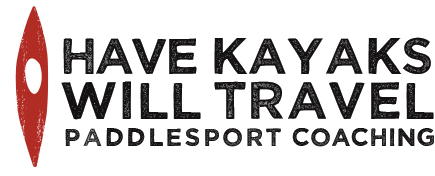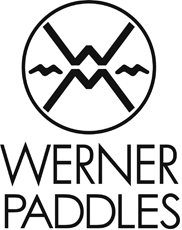Lately, a variety of things (school, work, family, events) has forced us to do most of our paddling in the late afternoons and evenings. With the recent time change, that means it’s hard to get on the water before dark. Lights, camera, paddle! Last night, the sun set shortly after 4:30. By the time we finished loading our boats, it was completely dark. We were the only boats in the harbor. Paddling out of the harbor. We were also the only boats on the lake, aside from the freighters making their way up and down the shipping channel many miles away. Familiar as we are with this area, it felt different in the dark. It was quiet, peaceful and solitary. Paddling among the pilings half a mile off shore. It felt creepy at first and a little confusing. Our sense of distance was altered, and our sense of hearing was especially acute. But it was also absolutely lovely. Nearer to shore, the city’s street lights cast an eerie glow. Three hours of after-work paddling felt like a mini-vacation. We landed, loaded up and drove away in the dark, and hung up our gear to dry by moonlight. Good night,...
Heavy industrial paddle in the Hoosier state
The southern shore of Lake Michigan is a testament to what goes wrong when industry runs amok. Factories and refineries clog the shoreline and pollute the air and water. Several even reach right into the lake, creating artificial peninsulas of industrial byproducts bordered by steel break walls. Every now and then, a short stretch of sand dunes suggests what this area was like before the titans of industry took it over. It’s depressing, but fascinating. We began our heavy industrial paddle in Portage, Indiana, where a former acid pit was recently remediated and turned into a park, complete with a LEED-certified building. Bathers on the nearby beach frolicked against a background of smokestacks and power lines. The put-in near Portage is beautiful, with native wildflowers reclaiming the land. We paddled for a couple of miles past dunes and beach houses, already within view of the upcoming industrial corridor. It wasn’t long before we reached the first of several industrial compounds. At that point, there was really no place to land–which was fine with us, because we wouldn’t have wanted to. It was noisy and the air smelled foul. At one point, we had to go around an enormous spit of reclaimed land where a steel company took over what had been part of the lake. For about six miles, we paddled along a steel break wall. Behind it, behemoth trucks dumped material and belched smoke that blew into the water and our faces. The navigational lights provided rare photogenic moments. If all of this sounds unappealing, it was. But it was also fascinating. Foul as it is, this coastline is a reminder of the environmental consequences of a modern, industrial economy. We drive cars, but how often do we visit refineries? We walk on sidewalks, but how often do we see a cement plant? We work in skyscrapers, but how often do we see a steel plant? As the sun set, we crossed the border into Illinois… …and landed at Calumet Park. Most of the time, it’s nice to paddle in places that are a little more pristine, or at least a little less polluted. But sometimes it’s good to paddle in a place that reminds us that consumption has...
A good day to explore the Chicago shore
On a day with strong off-shore winds, the lake looks calm. Yesterday’s marine forecast went beyond “small craft advisory” to “gale warning,” meaning winds between 34 and 47 knots (or 39 to 54 miles per hour). Those winds were coming straight out of the west, so the lake looked flat but we knew that paddling on it would be a challenge. When the wind is out of the west, the waves are in the east. We have enough experience by now that we know what we can and can’t handle. Years ago, we would have stayed off the water on days with such strong off-shore winds, but now we’re pretty confident that we can paddle against winds of 40 knots or a little higher, and even enjoy them up to about 35 knots. Since these winds were right on the edge of that range, we decided to mostly stay closer to shore. There’s plenty to do on a near-shore day. You can play in the the harbor, using the dock ramps as an obstacle course. Sharon sneaks under a ramp, avoiding the hoses, lines and chains. Alec makes the process look effortless. We stayed near shore most of the way down to the former US Steel South Works Mill, which was closed in 1983 and is now a strange amalgamation of post-industrial waste and opportunistic greenery. The shoreline looks like boulders, but when you paddle closer you see that it’s all concrete slabs, slag and rebar. The unnatural landscape near the former US Steel South Works Mill. That’s not to say it isn’t fascinating and even beautiful in its own odd way. We spent some time taking photos of the material put here deliberately and the stuff that has washed up on shore. Then we paddled back, taking a more direct route and exposing ourselves to more of the wind. By now, the peak winds were 40 knots (46 miles per hour), and paddling into them required some concentration. At one point, we noticed that we weren’t weather-cocking at all, which surprised us until we realized why: we weren’t moving fast enough to create a bow wake. Some days we like to paddle long distances. Some days we like to paddle hard. But some days it’s just nice to be out on the lake in whatever conditions arise, putting no pressure on ourselves to do anything more than enjoy the fact that we have access to this local treasure, a lake that is both natural and terribly altered by...
A good day to explore the shore
Yesterday’s marine forecast went beyond “small craft advisory” to “gale warning,” meaning winds between 34 and 47 knots (or 39 to 54 miles per hour). Those winds were coming straight out of the west, so the lake looked flat but we knew that paddling on it would be a challenge. We have enough experience by now that we know what we can and can’t handle. Years ago, we would have stayed off the water on days with such strong off-shore winds, but now we’re pretty confident that we can paddle against winds up to about 40 knots, and even enjoy them up to about 35 knots. Since these winds were right on the edge of that range, we decided to mostly stay closer to shore. When the winds are out of the west, the area closest to the Chicago shore is flattest. There’s plenty to do on a near-shore day. You can play in the the harbor, using the dock ramps as an obstacle course....
Sharon paddles along the break wall, past a light marking the entrance to the Calumet channel. There’s plenty of traffic on the Chicago coast during the summer months. We share the water with tour boats, yachts, motor boats, sail boats, fishing boats, coast guard vessels, jets skis and more. On a summer weekend, it can get pretty busy–and sometimes pretty scary. But there’s one type of boat we’re always happy to see: Great Lakes freighters. These monumental vessels remind us that Chicago owes its existence to the convenience of sending cargo by sea, and that its maritime role extends to this day. Today we paddled down toward the heavy industrial area on Chicago’s far south side. While eating lunch at Calumet Park, we saw the Philip R. Clarke as she approached the Calumet River. We knew she was coming long before we saw her because her captain announced her arrival an hour in advance on channel 16, which we monitor any time we are near or crossing shipping channels. So we paddled out to a nearby buoy to watch her turn once to get into the channel, then a second time so she could back into the river. The Philip R. Clarke and the Avocet LV. We stopped to take pictures, of course. Alec brings out the serious camera. The 767-foot freighter, capable of hauling more than 25,000 tons of cargo. These Great Lakes freighters command respect. They make all the little motor boats look ridiculous. They’re predictable, they follow the nautical rules of the road, and they’re just plain amazing. We think our kayaks, given a choice, would come back in another life as Great Lakes...
Sex and the single paddler
OK, the title of this post is a little misleading. We just wanted to see how it would affect our analytics. But this is a post about sex — the female sex — and the issue of all-women’s classes and symposia. Ladies of the Lake, the spirited midwestern all-women’s symposium, begins shortly. Over the years, Sharon and Hannah have taught a number of classes that are specifically billed as women-only. We’ve written about this before in greater depth, but in our experience, women-only classes offer opportunities to address: woman-specific paddling issues, such as having less upper-body strength and more upper-body bulk than most male paddlers (not to mention how to pee while on the water); woman-specific insecurities, such as dealing with a male paddling partner who is faster/stronger/bossier or has a different set of expectations for a day on the water; woman-specific strengths, including our ability to encourage one another while we overcome our fears and learn new skills. Some symposia have a women’s track or some women-only classes. But the upcoming Ladies of the Lake (now in its seventh year), sponsored by Downwind Sports, is a women-only symposium. Just because this is a women’s symposium doesn’t mean it isn’t every bit as exciting and challenging as a mixed-gender symposium. We work on strokes, rolling, braces, navigation and incident-management, and if the surf’s up, we go out and catch the waves. And just because it’s a women’s symposium doesn’t mean we think we can only have this kind of fun with women. In fact, many of us instructors love paddling with men, learning from men, teaching men and even competing with men. We’re sure the same is true of many of our students. But there is something very powerful about gender camaraderie, especially for a gender that has historically been discouraged from pursuing physically challenging activities. And if registration numbers for this year’s Ladies of the Lake symposium are any indication, the appeal of women-specific kayak classes is still...
Developing some wisdom about the weather
A foggy morning at 63rd Street beach. The breakwall 100 feet to the right is invisible. (Photo by Lyn Stone.) This has been a season of extreme weather. We’ve had torrential downpours, heat waves, gale-force winds and thick fog–sometimes all in the course of 24 hours. Paddlers need to pay attention to the weather, but looking at the all-purpose local forecast is rarely enough. We start there, but then we turn to a combination of regional radar, marine forecast, nearby weather reporting stations, and good old-fashioned observation to get a more sophisticated sense of what conditions we’ll experience on the water. Some of these sources are easy to identify. In our area, they include: The Weather Underground forecast for the Chicago Lakefront. The regional radar that shows what might be coming. The near-shore marine forecast. The current and recent conditions reported at the Harrison Street crib, for what is actually happening on the lake. The Great Lakes wave forecast. The model of projected fronts and temperature gradients that suggests how the weather may look up to 5 days out. We’ve also acquired a small library of books that help us understand the weather and decode the evidence around us. Five of our favorite weather books. These sources are only as useful as the context you put them in, however. We compare what they suggest to what actually happens, and over time we’re developing a pretty good ability to know what’s coming and get off the water in time if it’s something bad. Ominous clouds. Another afternoon when we got off the water before the storm hit–this time with...
The Eisenhower Canal, at last!
The Eisenhower Expressway (left) and the Eisenhower Canal (right). For years, the Illinois Department of Transportation has been threatening to widen the Eisenhower Expressway (I290), and local residents have been arguing that it would be better to extend public transportation. We strongly support the idea of more trains and fewer cars, but we’ve always dreamed of a canal between our home and downtown Chicago. Imagine water taxis taking commuters to and from work. Imagine Venetian-style gondolas at night. Best of all, imagine paddling downtown in our kayaks! Yesterday our dream nearly came through. Oak Park, where live, got 7.89 inches of rain in 24 hours, flooding the Eisenhower (which was closed to traffic for several hours) and creating a lovely canal around the train tracks. Another view of the canal (photo courtesy of Lyn...
Water access and guerilla landings
Adam Goss, of Spirit of Space, talks with Alec about paddling in Chicago. Yesterday, we agreed to participate in a video for a firm that’s developing a plan for Chicago’s Northerly Island. For those of you who are unfamiliar with this man-made peninsula, it is the former site of Meigs Field, a single-strip airport much beloved by VIPs and others, that Chicago’s mayor, Richard M. Daley, destroyed in the middle of the night in 2003. Today the main terminal building is a Chicago Park District facility full of little kids in matching t-shirts, and the island itself is the site of the Charter One Pavilion and acres of prairie grasses. This left us in the unlikely possession of free parking for the afternoon in one of Chicago’s most expensive and restricted lakefront lots, so we took advantage of the 45 minutes before a thunderstorm rolled in to paddle around Burnham Harbor. It was the day before the 2010 Race to Mackinac, so the harbor was full of visiting vessels, including the famous Beau Geste. Sharon in a position that wouldn’t be safe 24 hours later. We always enjoy prowling around harbors, admiring the creative names people give their yachts and enjoying the fact that we don’t have to spend thousands of dollars to dock our little boats. With the sky growing dark, we decided to forego the low docks and scale a wall instead. The sky looks blue in the background, but at this point we were watching heavy cumulonimbus clouds coming our way. In typical summer paddling fashion, we loaded up and drove away just as the storm hit. Weather can change quickly in the summer. This photo was taken moments after the previous...
Reflections on our 20,000th blog visit
The sea kayaking world isn’t that big. The serious sea kayaking world is even smaller. And the geeky, read-about-it-when-you-aren’t-doing-it sea kayaking world? Smaller still. And yet, today we achieved a small milestone in that small world: our 20,000th visit. That may seem unimpressive to a blogger who covers a topic of more general interest, such as politics, law, news or sports. But for us, it’s a big deal–or at least an opportunity to reflect on what we’ve been doing here that entices people to visit. When we began this blog in 2008, we hoped...







